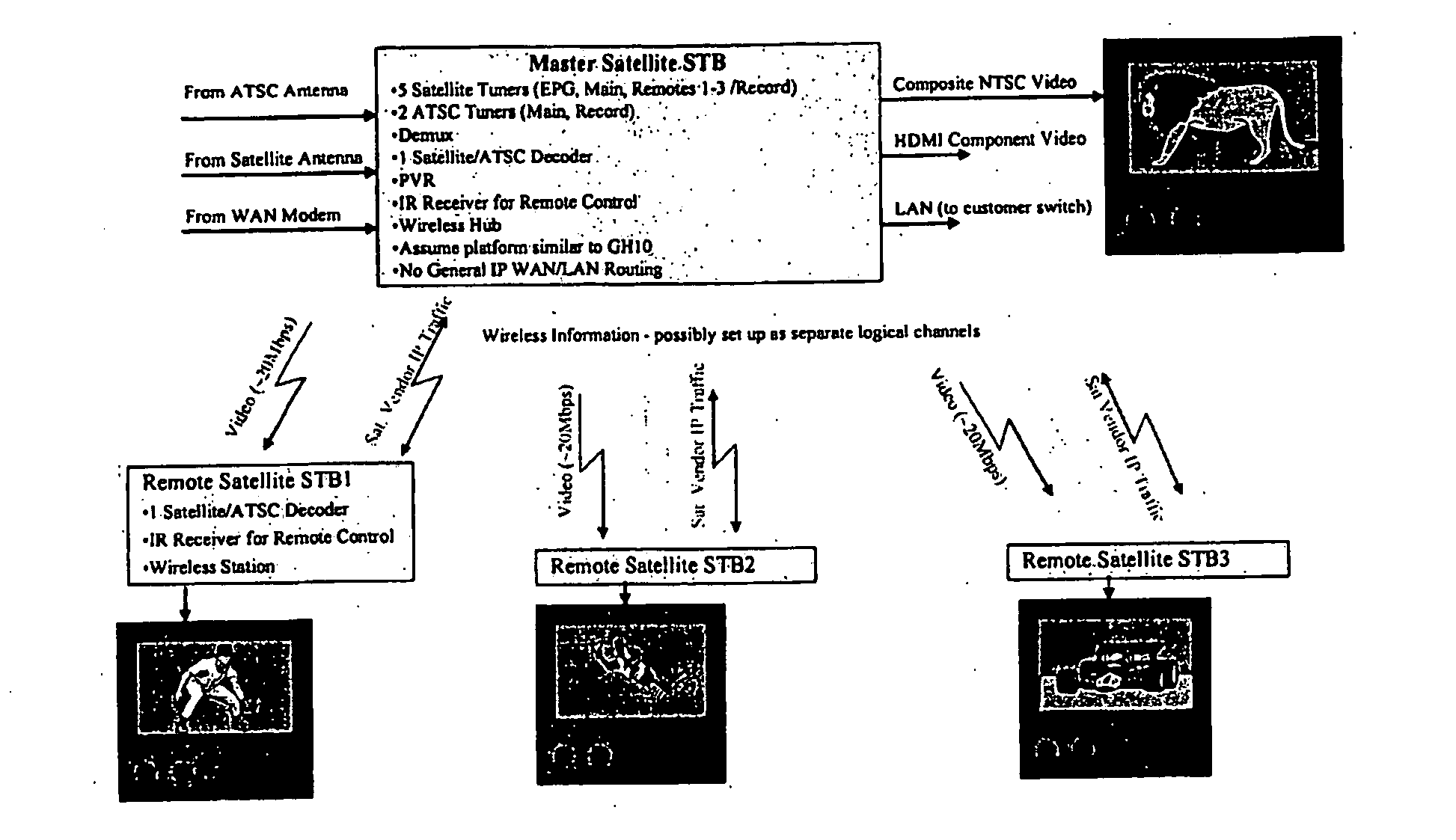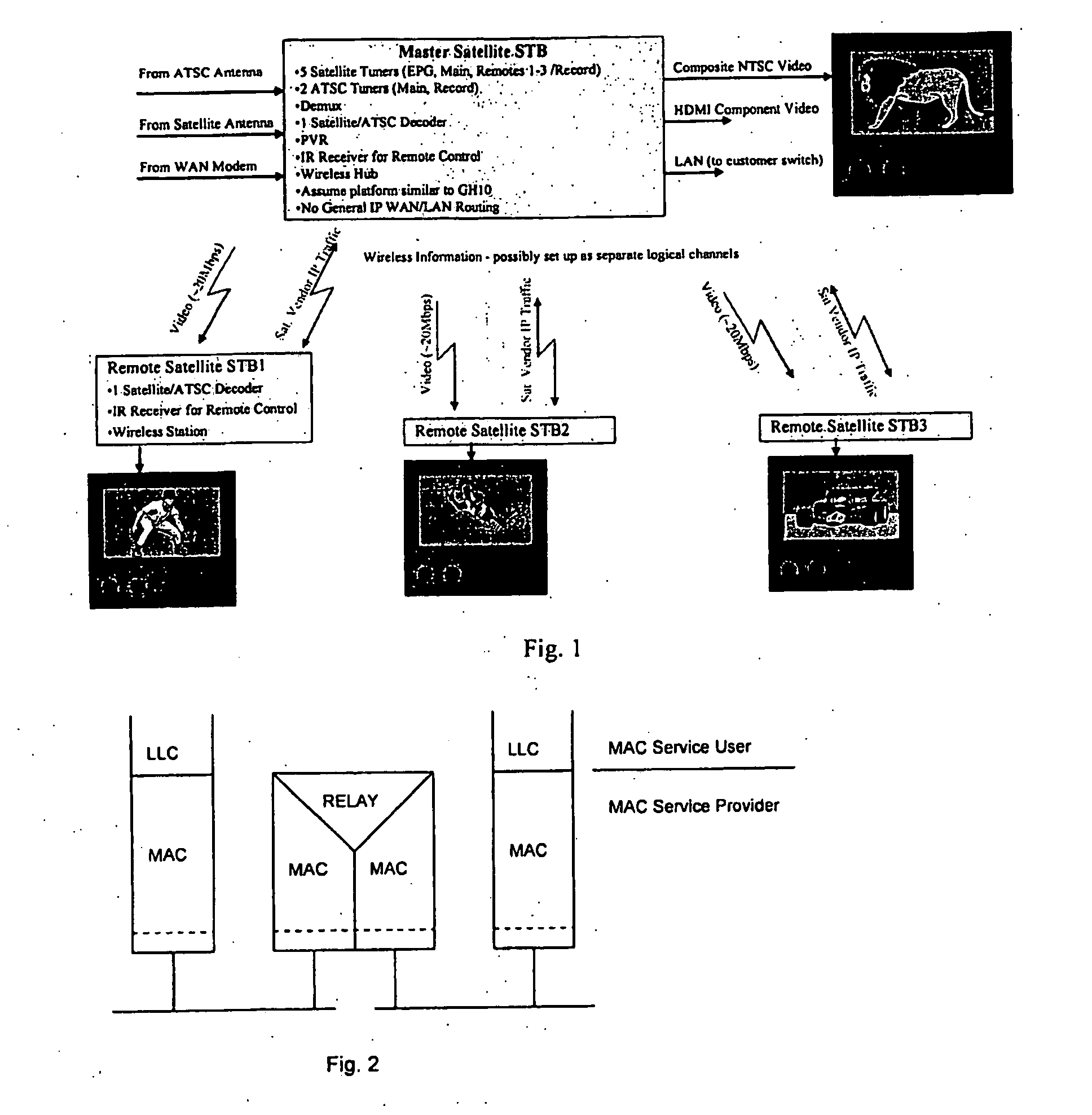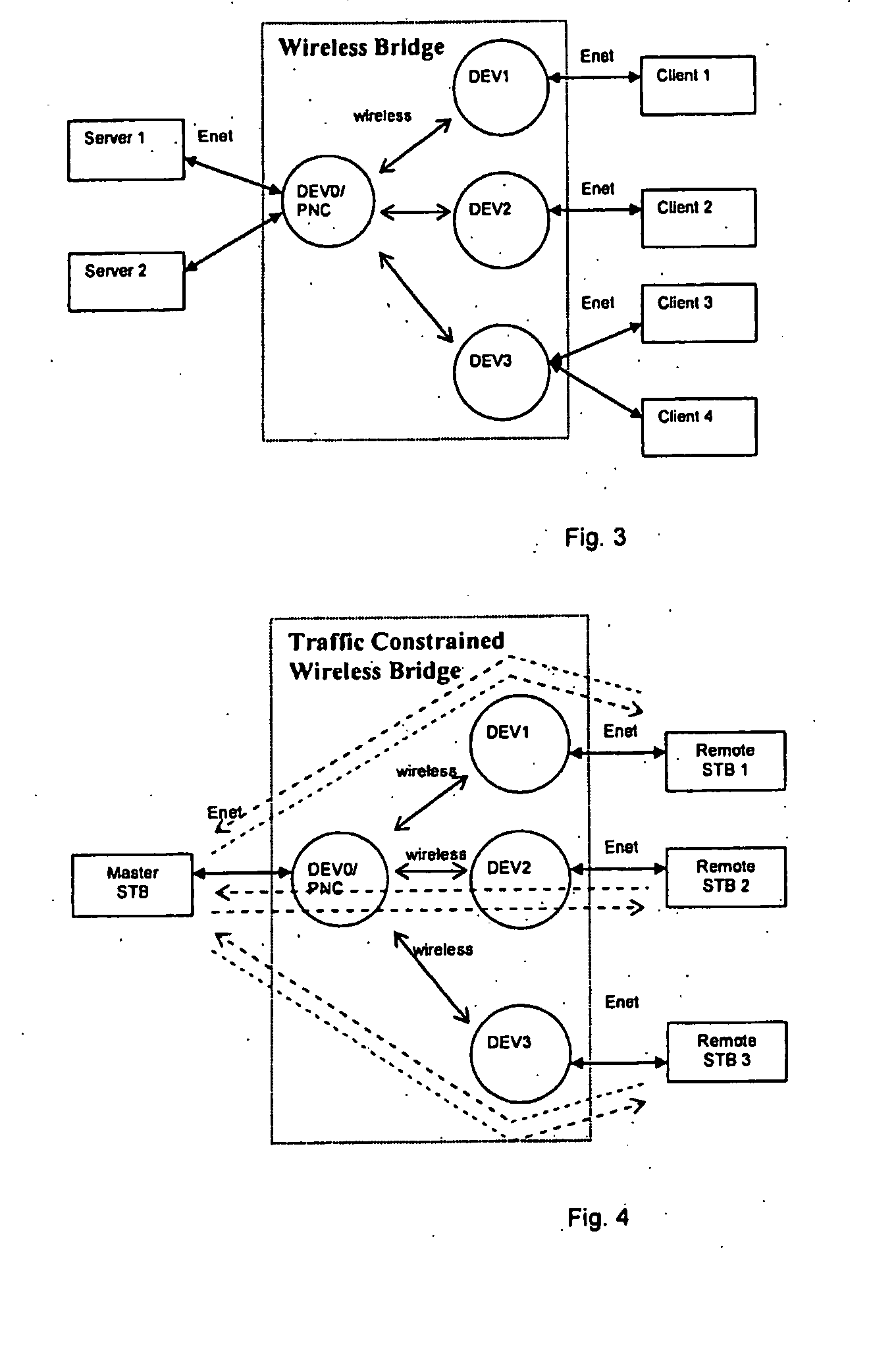[0013]The present invention also has the
advantage that it does not require any change to the video
system middleware, including the protocols carrying the video.
[0014]In the above described application, video is distributed over TCP, which is a connection oriented bi-directional protocol that is layered over IP in a
protocol stack. Although the TCP ACKs are useful for transmission through
the internet, their usefulness in a reliable LAN for use in
video streaming as in the present invention is questionable. TCP, however, is what is available as
middleware in a bridging device and it is desirable not to alter existing
middleware but rather to augment and enhance it. High reliability can be achieved through low
physical layer (
PHY) packet error rate and re-transmission at the MAC layer. It is also desirable to reduce overhead caused by TCP ACKs being returned by a remote STB and the negative effects on the TCP sliding window.
[0015]Described herein are three methods for reducing the overhead caused by the TCP ACKs. The first two methods are combined to form the third method. Since the exemplary embodiment of the present invention (for description purposes) is based on a TDMA MAC, transmissions from the remote STB to the master STB occur in bulk every 5 or 10 msec depending on the length of a
superframe. For this transmission, the remote STB takes packets out of its transmit
queue and assembles them into a series of frames (or aggregated frames) for transmission. In this exemplary embodiment, all of this traffic is destined for the master STB. For the first method, the remote bridge device examines the IP and TCP headers of frames in its transmit
queue and determines which of the ACKs can be eliminated. Depending on the contents of the frames, several TCP ACKs are replaced with one TCP ACK. This allows for a shorter CTA being allocated to the remote devices / STBs leaving more time for the CTAs assigned to the master device / STB and therefore more time allocated for downstream video.
[0016]In the second method, TCP ACKs back to the master STB are generated by the master bridge device. In this case, the master STB is fooled into thinking that the packet has already been received by the remote STB. The master bridge device keeps track of the TCP sliding window, TCP sequence numbers, the
maximum segment size (MSS) and its own transmit
queue. If TCP frames are arriving too often from the master STB, then the master bridge device withholds a TCP ACK until the queue level decreases. This is a form of flow control. The master bridge device also intercepts the TCP ACKs actually being returned from the remote STB to make sure they are not forwarded to the master STB. Alternatively, the TCP ACKs can be intercepted by the remote bridge device and a summary report can be sent to the master bridge device if necessary. It is also possible that the remote bridge device discards the intercepted TCP ACKs. This second method has the
advantage of being able to reduce the negative effects of a small TCP sliding window in addition to reducing overhead.
[0017]The third method combines the two methods described above. The TCP ACKs are generated locally by one of the bridge devices (master or remote) as in the second method, however the TCP ACKs being returned by the remote STB are combined as described in the first method. These methods could be considered crosslayering since they involve MAC, IP, and TCP
layers / functions and reside in the bridge / MAC layer. The benefit is reducing negative effects of streaming over TCP while requiring no change to the STBs. The bridge devices identify and perform a limited amount of TCP /
IP processing. For general data network traffic, the industry has for the most part kept all of the
layers separate and independent. The MAC layer is usually not aware of the type of
data traffic being carried in the
payload of its frames. For example, an
Ethernet switch for the home has no knowledge of TCP or IP and, in fact, usually requires no setup. The bridge is transparent to the network and operates at the MAC layer. No prior art method of any
distribution system aims at reducing TCP ACKs through MAC / Bridge layer involvement.
 Login to View More
Login to View More  Login to View More
Login to View More 


